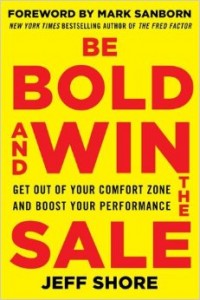Fear and Forgiveness
This week our very own Lisa McArthur tackles the weight of fear and the weightlessness of forgiveness.
—-
Reading the story of Dean Otto this week, it’s hard not to reflect on the power of forgiveness. For those not familiar with his story, Dean was seriously injured when struck by a truck while riding his bike last September. He had no feeling from the waist down. Against the odds, last week Dean completed a half-marathon in under 2 hours. But what makes this story so unique is that Dean ran that marathon alongside his surgeon and the young man who hit him.
Even while sitting on the side of the road, Dean forgave the driver. “I accepted what had happened to me. I forgave the guy that hit me so I wouldn’t harbor any resentment and being able to do that has really helped me throughout the whole process.”
WOW!
A poignant example of forgiveness overcoming fear. Fear holds us back and restricts us from working together and accomplishing truly inspiring things. The ability to be gracious, to forgive, to move forward past a challenging event benefits everyone involved. If Dean can forgive the driver of the truck that hit him…what’s stopping me? What grievances do you have in your workplace and what’s stopping you from moving past them? In a word…FEAR.
Fear makes us hold back, avoid situations and do nothing. But doing nothing has a cost a well. How do we move past our fears, forgive and build trust?
Step 1: Name your fear
Start by being explicit about what is holding you back. Here are 4 common ones:
- Execution fear – I might make a mistake
- Competence fear – I don’t how to do it right
- Outcome fear – Everything might not turn out the way I want it to
- Shame-based fear – They might not like or respect me anymore
Step 2: Write it, Read it, Say it
Once you can identify your fear, write it down, read it and say it out-loud. Don’t be tempted to skip this step. By writing things down and saying them out-loud, we move past our fight-or-flight emotional impulses and diminish the power of the emotion. I’ve often been in contentious meetings and have scribbled many such “verbalizations” in the margin of my notebook. Trust me…it works!
Step 3: What’s the worst that could happen?
Think about your next meeting or conversation? What will you say or do? What is the worst thing that could happen? Could you be challenged? Yes. Could you be embarrassed? Possibly. What else might happen?
For many of us, the outcomes will not be life-threatening. They may be unpleasant for the short-term but will be things we can overcome. Thinking about outcomes rationally can help us maintain perspective and take the fear out of the situation.
Step 4: Identify the other person’s fear
Put your fears aside and try to see things from the other person’s perspective. Dean Otto told the young driver to not let this define or haunt him. He recognized the fear and impact of the event on both of them. Think about your personal situation…what fears might be driving the other person’s behavior? How might you be able to help them overcome their own fears?
This serves two key purposes…it may help you find new win-win ways to deal with the situation…but most importantly, it changes the sound of that little voice inside your head and lets you move beyond your fear.
Step 5: Act
Most importantly, you need to act.
Understanding both perspectives, take honest stock of the situation, define what you can and cannot do, then take action. Remember, the fear of doing something wrong often stops us from doing something right. Be confident in your intent. As Dean said he “forgave…so I wouldn’t harbor any resentment.”
Team performance in any organization starts with collaboration. We must learn how to hold ourselves accountable to each other, get past our own fears and resolve conflict quickly. Fear holds us back and prevents us from working together. By acknowledging our fears and taking the risk of forgiveness, we create teams that can accomplish great things. What fears are holding you back from forgiveness and what risks are you willing to take to run your own version of a half-marathon?


 There are many ways to think about sales and selling. You can focus on value propositions, sales processes, sales management, motivation, techniques, and models. In this blogpost series, I focus on something else that’s common in sales – fear.
There are many ways to think about sales and selling. You can focus on value propositions, sales processes, sales management, motivation, techniques, and models. In this blogpost series, I focus on something else that’s common in sales – fear. This is the first of a four-part blogpost series. In
This is the first of a four-part blogpost series. In  This weekend I joined a dozen school buddies for an annual golf outing. Now, I took up golf late in life, which explains why I’m pretty much the worst player in the group. At least, that’s what I tell myself.
This weekend I joined a dozen school buddies for an annual golf outing. Now, I took up golf late in life, which explains why I’m pretty much the worst player in the group. At least, that’s what I tell myself.